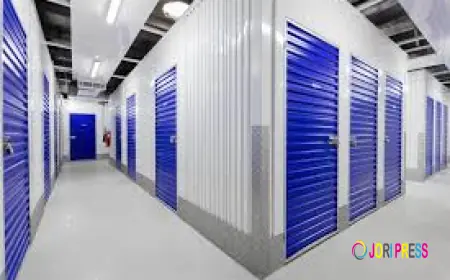Pool Heat Pumps Market Analysis by Type & Tech
The Global Pool Heat Pumps Market is undergoing a significant growth phase, shaped by the intersection of energy efficiency demands, environmental sustainability, and consumer lifestyle changes. According to TechSci Research, the market was valued at USD 2.28 billion in 2024 and is projected to reach USD 3.13 billion by 2030, growing at a CAGR of 5.47%.

Introduction
The Global Pool Heat Pumps Market is undergoing a significant growth phase, shaped by the intersection of energy efficiency demands, environmental sustainability, and consumer lifestyle changes. According to TechSci Research, the market was valued at USD 2.28 billion in 2024 and is projected to reach USD 3.13 billion by 2030, growing at a CAGR of 5.47%.
Swimming pools, once viewed as symbols of luxury, have evolved into integral spaces for recreation, fitness, and wellness. This transformation is creating opportunities for advanced heating technologies that extend pool usability across seasons. Pool heat pumps have emerged as one of the most efficient and environmentally friendly solutions, offering significant cost savings over time while reducing carbon footprints.
Unlike traditional gas or electric resistance heaters, pool heat pumps extract heat from the ambient air or nearby water sources and transfer it to the pool water, consuming less energy while delivering consistent performance. This efficiency, paired with advancements in refrigerant technology, has positioned heat pumps as the preferred choice for sustainable pool heating.
Industry Key Highlights
- Market Size & Growth: From USD 2.28 billion in 2024 to USD 3.13 billion in 2030, CAGR 5.47%.
- Primary Demand Drivers: Rising focus on energy efficiency, sustainability, and year-round pool usability.
- Technological Innovation: Advancements in compressors, eco-friendly refrigerants, heat exchanger designs, and smart connectivity.
- Environmental Compliance: Shift to low-GWP refrigerants to meet international climate regulations.
- High-Efficiency Segment: Water source heat pumps growing fastest due to stable temperature sources and lower operational costs.
- Key Regional Opportunity: Asia Pacific emerging as the fastest-growing market, driven by urbanization, tourism, and luxury housing growth.
- Design Improvements: Compact, modular, and low-noise units catering to diverse pool sizes and aesthetics.
- Operational Advantages: Lower long-term running costs compared to traditional heating solutions.
- Market Challenges: High upfront cost and limited consumer awareness in certain regions.
- Competitive Landscape: Mix of global leaders and niche manufacturers, with increasing focus on customization and after-sales service.
Download Free Sample Report - https://www.techsciresearch.com/sample-report.aspx?cid=16643
Market Drivers
1. Rising Demand for Energy Efficiency
Energy prices continue to rise globally, making operational cost savings a critical consideration for pool owners. Pool heat pumps deliver higher coefficients of performance (COP) than conventional heating systems, meaning more heat output per unit of electricity consumed. The ability to reduce ongoing energy bills is a strong incentive for residential, commercial, and hospitality sectors.
2. Shift Toward Sustainable Pool Management
Sustainability is no longer a trend but a necessity. Heat pumps produce significantly fewer greenhouse gas emissions compared to fossil fuel-based heaters, aligning with both corporate ESG goals and consumer environmental values. The integration of low-GWP refrigerants and recyclable components further strengthens their green credentials.
3. Growing Popularity of Swimming Pools
Urbanization, lifestyle upgrades, and tourism growth are leading to more private, commercial, and hospitality pool installations. From luxury villas to wellness centers, pools are increasingly being seen as essential amenities — and heating solutions are vital to ensure year-round usability.
4. Government Incentives and Energy Regulations
Governments in many countries are offering rebates, tax credits, or low-interest financing for adopting energy-efficient heating systems. Regulations aimed at phasing out inefficient heating methods are also creating a favorable policy environment for pool heat pumps.
5. Technological Advancements in Product Design
From quiet-operation fans to smartphone app controls, manufacturers are enhancing both performance and user convenience. Self-diagnostics, corrosion-resistant materials, and variable-speed compressors are improving reliability and extending product lifespans.
Emerging Trends in the Global Pool Heat Pumps Market
1. Smart Connectivity & IoT Integration
Smart controls allow pool owners to monitor water temperature, energy usage, and maintenance needs remotely. Integration with home automation systems enables optimized energy scheduling, aligning heating with off-peak electricity rates.
2. Water Source Heat Pumps Gaining Traction
While air source heat pumps dominate in many markets, water source models are seeing accelerated adoption. These systems extract heat from groundwater or nearby water bodies, offering higher efficiency in colder climates and stable performance regardless of seasonal temperature fluctuations.
3. Compact and Modular Designs
Manufacturers are producing space-saving, modular units suitable for smaller properties and urban environments, without sacrificing heating capacity.
4. Low-Noise Operation
Noise reduction technology is becoming a selling point, especially for residential and hospitality pools where a peaceful environment is a priority.
5. Hybrid Heating Systems
Some advanced models combine heat pump technology with solar thermal integration or backup electric heaters, offering operational flexibility and optimal performance year-round.
Market Segmentation Insights
By Type
- Air Source Heat Pumps – Most common, versatile, and cost-effective for temperate climates.
- Water/Geothermal Source Heat Pumps – Fastest-growing segment, offering higher efficiency and performance consistency.
By Capacity
- Less than 10 kW – Ideal for small residential pools or spas.
- 10–20 kW – Suitable for medium-sized pools in residential or light commercial settings.
- More than 20 kW – Used in large-scale pools, resorts, and sports complexes.
By End User
- Residential – Dominates market share; rising demand for backyard pools in luxury housing.
- Commercial – Strong growth in hospitality, sports facilities, and wellness centers.
Regional Insights
Asia Pacific – The Fastest-Growing Market
- Urbanization & Luxury Housing: Rapid construction of premium real estate with pools as standard features.
- Tourism Sector Growth: Expansion of resorts and hotels driving demand for reliable, efficient heating.
- Government Support: Incentives for sustainable technologies boosting adoption.
North America – A Mature but Growing Market
- High Pool Ownership Rates: Strong demand for replacements and upgrades.
- Eco-Conscious Consumers: High awareness of energy efficiency benefits.
Europe – Sustainability-Driven Adoption
- Strict Environmental Regulations: Encouraging transition to low-emission heating.
- Climate Factors: Need for heating solutions to extend pool usage beyond summer months.
Competitive Analysis
The market is moderately consolidated, with a mix of established international brands and specialized regional manufacturers. Competition revolves around efficiency, innovation, customization, and after-sales service.
Key Players:
- AquaPro Systems – Known for versatile residential and commercial units.
- Dantherm AS – Focuses on durable, high-performance systems for colder climates.
- Elecro Engineering Ltd. – Specializes in premium heating and control systems.
- Hayward Industries Inc. – Offers a wide product range with strong global distribution.
- Pentair Plc – A leader in pool solutions with energy-efficient designs.
- Rheem Manufacturing Co. – Renowned for reliable heating technology.
- Pahlen AB – Known for stainless-steel, corrosion-resistant designs.
- Thermeau Industries Inc. – Focuses on commercial-grade pool heating solutions.
Competitive Strategies:
- Product diversification to cater to various pool sizes and climates.
- Introduction of eco-friendly refrigerants and recyclable materials.
- Expansion of after-sales service networks and training programs.
- Integration of IoT and smart monitoring features.
Future Outlook
From 2024 to 2030, the global pool heat pumps market will be shaped by:
- Stricter environmental policies accelerating the phase-out of traditional heating.
- Growing middle-class wealth in emerging economies driving new pool installations.
- Integration with renewable energy sources like solar for hybrid heating systems.
- Rising consumer education efforts addressing misconceptions about cost and maintenance.
- Greater focus on customization to match diverse pool types, climates, and user preferences.
Manufacturers that combine cutting-edge efficiency with affordable financing models and strong distribution networks are likely to gain significant market share.
10 Benefits of the Research Report
- Accurate Market Size & Growth Projections – Detailed forecasts from 2024 to 2030.
- Segmentation Insights – Breakdown by type, capacity, end user, and region.
- Trend Analysis – Identification of emerging product and technology trends.
- Regional Growth Opportunities – Focused insight into high-potential markets like Asia Pacific.
- Competitive Intelligence – Profiles and strategies of leading market players.
- Technology Landscape – Overview of innovations enhancing product efficiency.
- Policy & Regulation Overview – Impact of environmental laws and government incentives.
- Consumer Behavior Analysis – Understanding key decision drivers in purchasing.
- Challenges & Solutions – Identification of barriers with recommended strategies.
- Strategic Recommendations – Guidance for investment and market entry.
Contact Us-
TechSci Research LLC
420 Lexington Avenue, Suite 300,
New York, United States- 10170
M: +13322586602
Website: www.techsciresearch.com
What's Your Reaction?
 Like
0
Like
0
 Dislike
0
Dislike
0
 Love
0
Love
0
 Funny
0
Funny
0
 Angry
0
Angry
0
 Sad
0
Sad
0
 Wow
0
Wow
0
















































